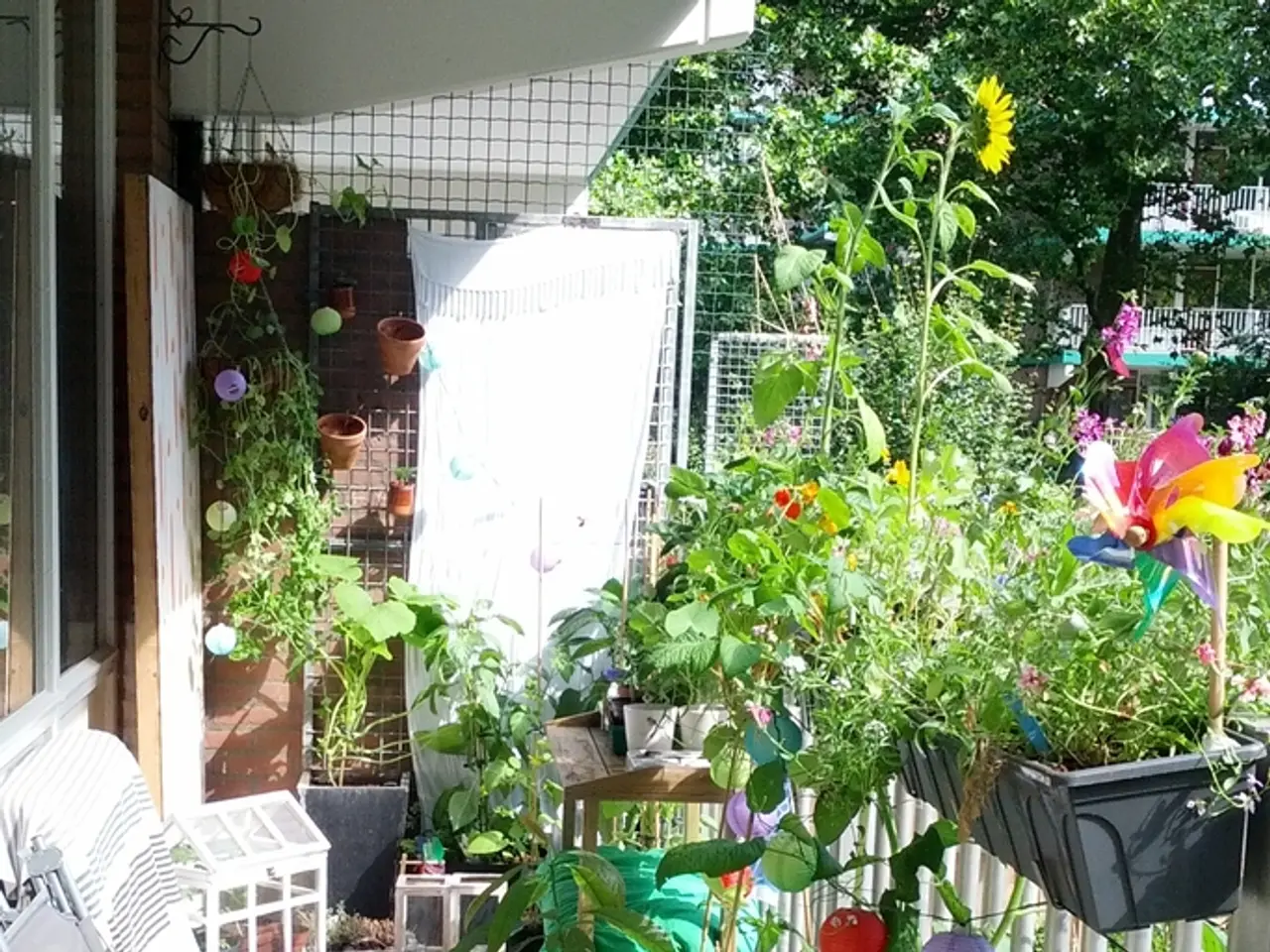Master the craft of building a garden wall with our DIY tutorial
Ready to DIY your garden wall? Here's a no-nonsense guide to building a stylish, secure boundary without a hefty price tag. Remember, though, to follow the height restrictions in the UK to avoid any hassle later on.
You can take on the project yourself, but it's essential to consider the factors involved before diving in. According to construction expert Kevin Keen of Keen's Buildings, if the wall is freestanding, under chest height, and you have basic masonry tools, go ahead. However, for soil-holding, grade-changing walls, or those over two meters in height, it's wise to hire a licensed builder.
If you're a beginner and eager to tackle the project, make sure you have all the right tools, practice laying a few courses in an out-of-the-way area, and take your time. And remember, neat joints are worth every additional minute spent!
To help you out, here are some top tools to use:
- A brick trowel like this alloy one - available in 250mm or 280mm sizes with a hard-end handle for tapping bricks into place.
- A quick-mixing, premixed mortar for consistent results.
- A perforated clay brick, traditionally red and rough-surfaced, to blend into natural surroundings.
Once equipped, follow these basic steps to build your garden wall:
- Lay footings: Dig out and lay your foundations - around 400-450mm deep and 200-300mm wide. Fill the hole with compacted MOT Type 1 (like this MOT type 1 Subbase from B&Q) followed by a concrete mix, and cure for 48 hours.
- Pick a start point: If replacing an old garden wall, start at the same point. If building a new garden wall, choose where you want to start, for example, next to a gate. Dry lay bricks (leaving a 10mm gap between each) to the opposite corner. Lay the two corner bricks level, add a builder's line to each brick, and you're ready to start laying courses!
- Laying a low wall: Spread your mortar mix, starting at one end, and lay down your first three or four bricks. Use a spirit level to ensure each brick is level, then tap each brick until level using the end of the brick trowel handle. Begin the second course with a half brick at each corner, and continue in the Stretcher Bond (joints midway between the course above and below) style.
- Building a double skin wall: For taller walls, a double-skin wall (offering more stability) is the better choice. Begin work on the first skin and when you have laid three or four courses, start on the second. Match up the two outside edges using a brick at a 90-degree angle. After laying all the courses for both walls, you can finish with a course of bricks at 90 degrees or use concrete coping like this Utility Twice Weathered Wall Coping from B&Q.
Before you start your project, it's essential to know the height restrictions:
- Front and side walls: Up to 2 metres in height without planning permission.
- Rear garden, trellises, and extensions: These may need consent.
- Front garden walls and fences: 1 metre or lower.
- Front garden walls and fences next to public spaces: Limited to 1 metre.
If in doubt, consult your local authority planning department - and always check deeds for shared boundaries and party-wall notices before beginning work on common masonry.
Good luck with your garden wall project! And may your boundaries be long-lasting, secure, and looking great.
- To build a garden wall without breaking the bank, consult this guide for a streamlined approach to designing a stylish and secure boundary.
- For freestanding walls under chest height, you can use basic masonry tools to take on the project, but consult a licensed builder for soil-holding, grade-changing walls, or those over two meters in height.
- If you're new to DIY projects, familiarize yourself with the tools recommended: a brick trowel, premixed mortar, and perforated clay bricks.
- To effectively build your garden wall, follow the steps provided, such as digging foundations, laying bricks, and choosing a start point.
- Consider a double-skin wall for taller gardens walls as they offer increased stability.
- Be mindful of the height restrictions for various garden walls, particularly front and side walls, rear gardens, and front gardens next to public spaces.
- Before commencing your project, review the local authority planning department regulations, check deeds for shared boundaries, and party-wall notices to ensure a harmonious home-and-garden lifestyle.




